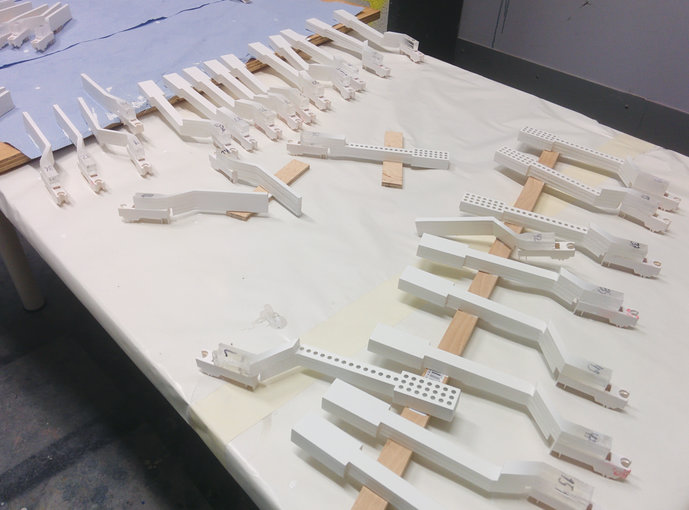

© Christopher Hyna


© Christopher Hyna


© Christopher Hyna
Christopher Hyna constructs a keyboard for the music production software “Ableton Live” for his diploma project. His keyboard is based on a normal piano, but breaks away from one of its basic concepts. On a normal keyboard, the key of C major is especially easy to play due to the irregular layout of the keys. Most other keys require the black notes in addition, which makes them ergonomically more difficult to play. The irregularity of the piano means that each key and their hand position on the piano must be learned separately.
In his diploma work, Hyna tries to do away with the extra learning by constructing an interface with equal steps between each key; in the musical sense as well as physically, similar to a guitar where the distance between each fret denotes a half-tone. This idea has already been applied in the past: Janko pianos have an “isomorphic” interface. They mostly consist of many redundant rows of keys, so that all chords and scales have the same fingerings and hand positions for any given key. In this diploma work, however, a keyboard without any redundant keys was developed in order to keep the simplicity of the conventional piano.
However, such a generic, equally spaced interface can lead to visual or tactile confusion. In order to avoid this, some of the keys were equipped with a surface structure so that they can easily be recognized with the fingers without looking. Furthermore, a color dynamic keyboard backlighting highlights where the base note is located, which keys lie within a particular scale, and which ones outside. The scale can be defined freely by the player and the lighting adapts itself accordingly to the selection. In the prototypes on show for the diploma, the keys are lit using projection-mapping. The final concept aims to light up the keyboard from the inside. The projection mapping is programmed in “Cycling 74 Max” so that that the scale and color can be selected with an additionally connected “Ableton Push 2” controller, enabling the projection to match in real-time. The final concept integrates a similar selection option in the machine. Due to the higher number of black keys per octave (six black and six white instead of five black and seven white), ergonomic problems can occur in the spaces in between. As a solution, the dimensions of the keys were re-adjusted so that the black keys are more narrow and short, and the white keys slightly wider.
Tutors:
V.Albus, C. Molgaard